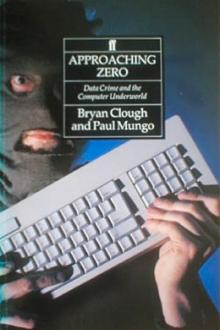The Kidnap Years: David Stout (best inspirational books TXT) 📖

- Author: David Stout
Book online «The Kidnap Years: David Stout (best inspirational books TXT) 📖». Author David Stout
Thus did federal agents learn that the “Blackburns” were really the Barkers—Kate or “Ma,” still the spiritual leader of the family at fifty-five, and her tattooed son Fred, thirty-two. For a year, they had been hunted for their part in the kidnapping of Edward Bremer. The law had really started to close in on them in December, when Arthur “Doc” Barker and his girlfriend were tracked to a location in Chicago. Biding their time, agents arrested Doc on January 8, 1935, without trouble. In the apartment where he’d been staying, investigators found a Thompson submachine gun believed to have been used in a 1933 payroll robbery in St. Paul, Minnesota, in which a police officer was slain.
Later on the night of January 8, gang member Russell Gibson was also cornered in Chicago. He elected to try to shoot his way out of the jam and was mortally wounded. (He was soon buried, without pallbearers or ceremony, as cemetery workers hustled the casket to a waiting gash in the frozen earth, then sought indoor warmth.)
Searching the places where Doc and Gibson had stayed, agents found firearms and ammunition and a map of Florida—with Lake Weir circled.
Before surrounding the Lake Weir cottage on the morning of Wednesday, January 16, 1935, agents quietly warned nearby residents to get out of the area.
Daylight was breaking when the agent in charge, E. J. Connelly, shouted for the people in the cottage to surrender.
How rich must have been the emotions of mother and son in that moment! They had never wanted to be taken alive, and now they knew that the sun was rising on the last day of their lives. The moment to fulfill their destiny had arrived. All they had to do was reach out and grasp it—or bend their trigger fingers.
They replied to the surrender demand with a burst of machine gun fire. The dozen or so federal agents answered with their own machine guns, plus tear gas canisters.
“Rifles and machine guns would crack for 15 minutes, then there would be a lull, followed by a renewal of firing from both sides,” the New York Times reported, quoting the Associated Press.150 “Most of the firing from the besieged house came from upstairs.”
After six hours of gunplay, during which agents fired some fifteen hundred rounds of ammunition, the house fell silent. “When the shooting ceased from the house around 11 o’clock, the agents sent a Negro cook, who had been working there, into the building. He returned saying, ‘They are all dead.’”
True to herself to the very end, Ma Barker had died with a machine gun in her hand. A bullet to the head had killed her, perhaps after she saw her son fall. Fred Barker lay near his mother, three bullet holes in his head and eleven in one shoulder.
So Hoover’s men had collected two more trophies, but the operation was hardly flawless. A mother and daughter whose home was nearby almost became casualties. Awakened by bullets crashing through their bedrooms and dining room, the women fled through a rear window.
“As we ran, some men yelled at us to stop,” the older woman said later. “We did not stop. They began shooting at us. I learned later it was the federal men. We kept on running and they kept on yelling and shooting… They didn’t know who we were. It was still a little dark.”
The woman’s account suggests that she and her daughter were nearly killed by agents. If one or both had been killed, the shootout on Lake Weir would have been a tragedy and debacle equal to or worse than the deadly fiasco at Little Bohemia Lodge, Wisconsin, less than a year earlier.
Maddeningly, there seems to have been little or no criticism in the press of the agents’ performance or of the man at the top who was in charge of their training. Blessed with uncanny luck and astonishingly good public relations, Hoover had dodged another bullet.
Days before the Florida shootout that killed Ma Barker and her son, Alvin Karpis’s girlfriend, Dolores Delaney, had begun to wonder just how safe the hideout really was. Acting on her instincts, she hopped a train to Atlantic City, New Jersey, with a friend, Winona Burdette, who also hung around with gangsters. Dolores had friends in Atlantic City, which she decided would be a good place to give birth. She was expecting a child by Alvin Karpis.
Karpis and another member of what was left of the gang, Harry Campbell, stole a car in Florida and drove north to join the women in Atlantic City. But their new hiding place, a small hotel near the boardwalk, turned out to be no safer than the Florida location. An Atlantic City cop spotted the Florida plate of the stolen car in a garage. The police soon deduced that Karpis, Campbell, and the women were staying in the hotel next to the garage.
On the night of Sunday, January 20, several policemen gathered outside the hotel room. When the cops ordered them to come out with their hands up, the bandits replied with machine-gun fire. The police were not only outgunned but probably not as used to deadly gunplay as the men they wanted.
A detective was wounded, as was Dolores Delaney, who was caught in the line of fire and struck in the leg. Karpis and Campbell were such seasoned gunmen that they drove the lawmen back with machine-gun volleys even as they were putting on overcoats and stepping into slippers. They escaped from the hotel (Campbell was reportedly wearing only underwear beneath his coat) and stole another car. And off they went into a snowy





Comments (0)